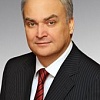Ambassador Anatoly Antonov’s answers to media questions about the monument to Alexander Baranov in Alaska
Question: could you please comment on the Sitka Assembly’s decision of July 14 to transfer the monument to Alexander Baranov, the first governor of Alaska (1747-1819), from the central square to the Sitka Historical Museum.
Ambassador Antonov: We were deeply saddened by the fact that, amid the wave of desecration and demolition of monuments to historical figures that rose during the mass protests in the United States, it was decided to dismantle the statue of the main ruler of Russian settlements in North America installed in 1989. The resolution was adopted and included many emotional assessments.
The constructive role of Alexander Baranov in Alaska and California is apparent. Under his leadership, more than 200 settlements were built, some of which still exist. The city of Novoarkhangelsk – the capital of Russian America (now Sitka) – was founded. Schools, libraries, hospitals, more than 60 Orthodox churches and even a seminary opened in the colonies. During the Baranov’s rule, more than nine thousand locals adopted Orthodoxy. And now the Tlingits, who make up a third of the local population, are Orthodox. Shipyards and agricultural colonies were organized. Brick and iron plants were operating. Russian Alaska was even manufacturing first modular wooden houses for San Francisco. Under Baranov, sanatoriums and nursing homes were already in place.
It is regrettable that history keeps on being politicized.
Question: could you please comment on the Sitka Assembly’s decision of July 14 to transfer the monument to Alexander Baranov, the first governor of Alaska (1747-1819), from the central square to the Sitka Historical Museum.
Ambassador Antonov: We were deeply saddened by the fact that, amid the wave of desecration and demolition of monuments to historical figures that rose during the mass protests in the United States, it was decided to dismantle the statue of the main ruler of Russian settlements in North America installed in 1989. The resolution was adopted and included many emotional assessments.
The constructive role of Alexander Baranov in Alaska and California is apparent. Under his leadership, more than 200 settlements were built, some of which still exist. The city of Novoarkhangelsk – the capital of Russian America (now Sitka) – was founded. Schools, libraries, hospitals, more than 60 Orthodox churches and even a seminary opened in the colonies. During the Baranov’s rule, more than nine thousand locals adopted Orthodoxy. And now the Tlingits, who make up a third of the local population, are Orthodox. Shipyards and agricultural colonies were organized. Brick and iron plants were operating. Russian Alaska was even manufacturing first modular wooden houses for San Francisco. Under Baranov, sanatoriums and nursing homes were already in place.
It is regrettable that history keeps on being politicized.
Question: Did the attempt to remove the monument have much resonance among the Russian diaspora in the USA?
Ambassador Antonov: Our compatriots made efforts to translate the discussion into a constructive direction. The Russian Community Council of the USA and the Congress of Russian Americans sent open letters to state and city legislators. But the Assembly of the City and Borough of Sitka did not take into account the opinion of the Russian-speaking community. Nonetheless, I would like to emphasize that since late May the petition has gained about six thousand votes.
Question: Did the Embassy address the mayor or governor to prevent the dismantling of the monument?
Ambassador Antonov: We refrained from such steps so that we would not face any accusations of interfering in the U.S. internal affairs.
I had a chance to visit Alaska and Sitka in particular. I met with Mayor Gary Paxton and a number of public figures. In general, I had the impression that everyone respected the pages of our common history. We discussed the preservation of the cultural and historical heritage in the United States and further cooperation in this area.
The memory of Baranov is immortalized not only by that monument. His name is given to the island on which the city of Sitka itself stands as well as to the archipelago which that island belongs to. During the visit, we had a meeting with Mary Miller, the Superintendent of Sitka National Historic Park, who said convincingly that with the departure of the Russians, local population faced certain prohibitions in terms of language, religion and culture from the new administration, which was not the case under Baranov’s rule.
Question: Russian businessman Andrey Filatov wanted to buy the monument. What was the reaction of the Sitka Assembly?
Anatoly Antonov: There have been numerous proposals to buy out the statue and transport it to Russia coming from everywhere, including the administrations of Arkhangelsk, Irkutsk and Magadan. But the local authorities decided to leave the monument in the city and move it to the museum.
Source: Russian Forein Ministry.




